It’s in the water. In our favorite beaches, swimming holes and — somehow — even in wild creeks and streams in the middle of nowhere.
Poop, that is.
America’s waters are infested with feces. We know this because state and federal agencies routinely test surface water across the country looking at various factors of quality, including E. coli bacteria levels, an indirect measure of fecal contamination. E. coli live exclusively in human and animal intestines, so the only reason for them to be present in the environment is…they were pooped there. The Centers for Disease Control and Prevention estimates that several hundred thousand human cases of E. coli infection occur in the United States every year.
As disgusting as this is, the news is actually worse in some cases. Since E. coli is an indicator of untreated sewage, it can be a sign of everything else that comes with it — hazardous chemicals, pharmaceuticals, heavy metals, antibiotics and pesticides, among other things. This single bacterium tells a larger story of an environmental issue that affects humans and whole ecosystems.
Dive in (metaphorically only, please) to these waste-filled waters as we explore the most egregious poop contaminations recorded across the country (and possibly near you).*
*Scroll to the bottom of the article if you’re interested in reading about our methods for processing and ranking E. coli data, as well as the limitations to the accuracy of the nationwide picture that emerged.
The top 10 percent most contaminated locations in America:
Whose poop?
One thing you might be wondering at this point is — whose poop is it? If you’ve explored the maps above for a few minutes, you’ll have noticed that a lot of these places aren’t exactly in highly populated areas.
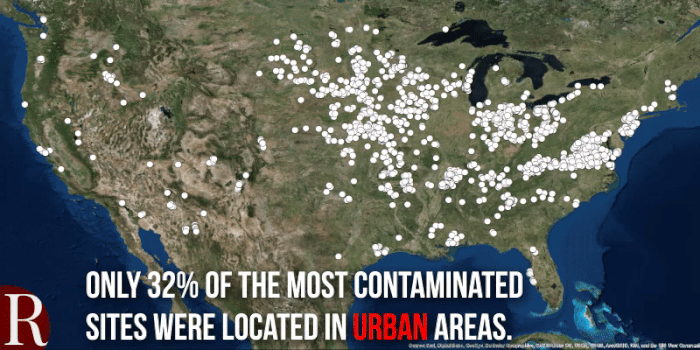
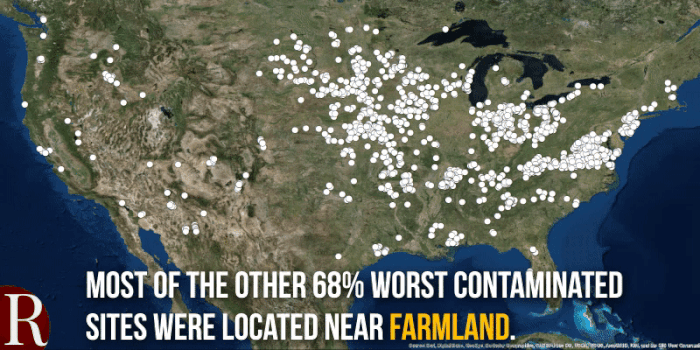
Location, location, location.
To try to understand what’s really going on, let’s get down to the street level at the 10 most contaminated sites in the country.
No clear solutions.
Here’s the rub — there’s no reasonable explanation for all this contamination. Treated urban sewage and farm manure contain low levels of E. coli. Waste from livestock farms sprayed as manure on fields is meant to stay there and fertilize fields — not flow into waterways. Some of the contamination comes from wildlife, but that’s only one small piece of the puzzle. There’s no reason E. coli should be present in our waters at these levels if there are proper systems in place to deal with the excrement of 320 million Americans and the farm animals that outnumber us — which means current systems are failing somewhere along the line.
While the country’s ecosystems are silently being flooded with poop, the situation is on track to get even worse. Earlier this year a congressional bill was introduced to further weaken regulations on dairy manure. Meanwhile climate change is increasing the frequency of critical sewage flooding events with every hurricane that hits the country.
This is not a problem that can easily be flushed away, and solving it will require communities to address the need not just for safer fecal management, but for larger sustainable choices that reduce the magnitude of the problem if they want to keep their citizens safe — and clean.
Disclaimer: This is not an absolute ranking of the most contaminated sites in America. There are many limitations to available data. Many known catastrophic manure spills and sanitation failures — such as hurricane flooding in North Carolina — do not show up in these maps, and some states just do not monitor their waters as closely as others.
Methods:
Data source:
Water-quality data downloaded from The Water Quality Portal, a cooperative service sponsored by the U.S. Geological Survey, Environmental Protection Agency and National Water Quality Monitoring Council. It serves data collected by more than 400 state, federal, tribal and local agencies.
Land cover and urban areas geospatial data provided by USGS.
Data parameters:
Quality characteristic: Escherichia coli. Other fecal organisms are sometimes evaluated by agencies, but E. coli testing has the widest and most uniform geographic coverage.
Quality measure: Number of E. coli as reported in Colony Forming Units (CFU), Most Probable Number (MPN), or number (#). Suitable data were collated under these three most widely used measures, and the top 10 percent of each of the three categories were collected separately to obtain the top 10 percent results overall.
Time period: All test results in five years — from October 2012 to October 2017. The same monitoring stations are sampled annually, but sampling occurs at different and sometimes arbitrary times of the year. To account for seasonal changes, unusual events, and other sources of stochasticity, five years of data were pooled and the highest result for each monitoring station was retained.
Limitations: Monitoring stations varied widely across states, with some states having more than 5,000 sampling sites, and others having as few as 500. However, existing monitoring stations across all states appeared to be well distributed across watersheds. Alaska, Hawaii, Illinois, and Rhode Island had the poorest monitoring coverage of all states.
9 thoughts on “Wasted Water: The Crappiest Places in America — Literally”
Comments are closed.

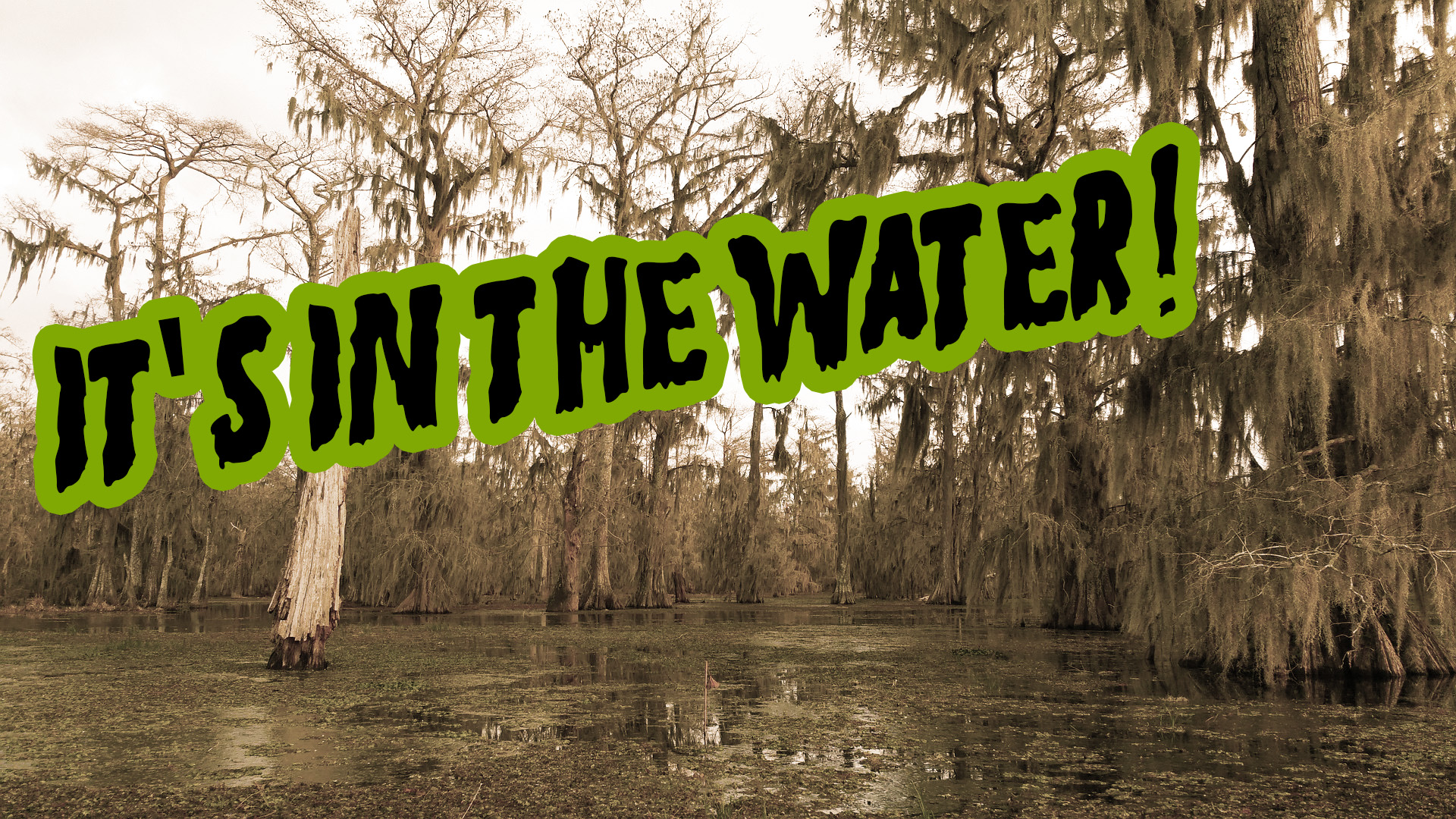
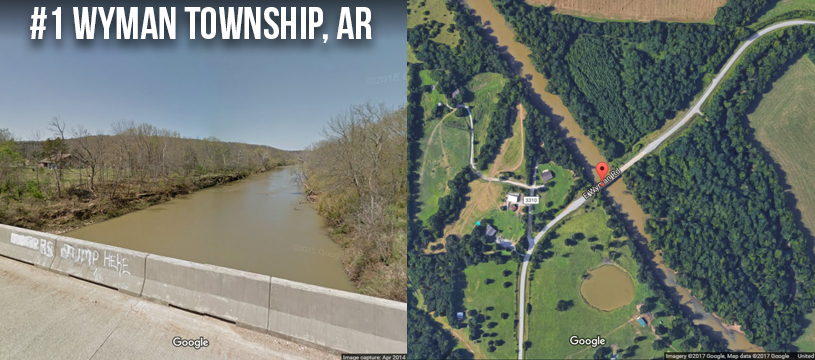
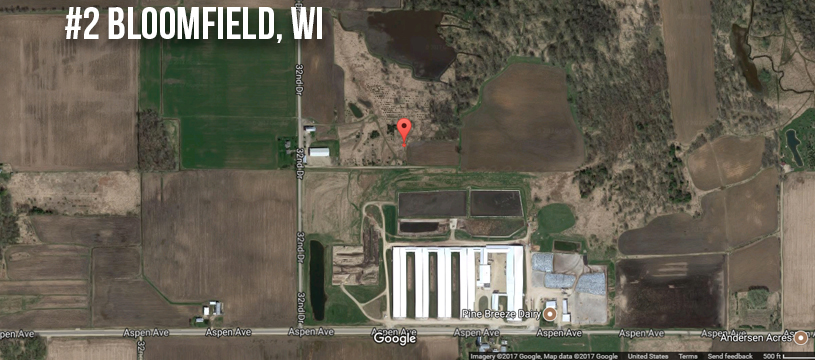
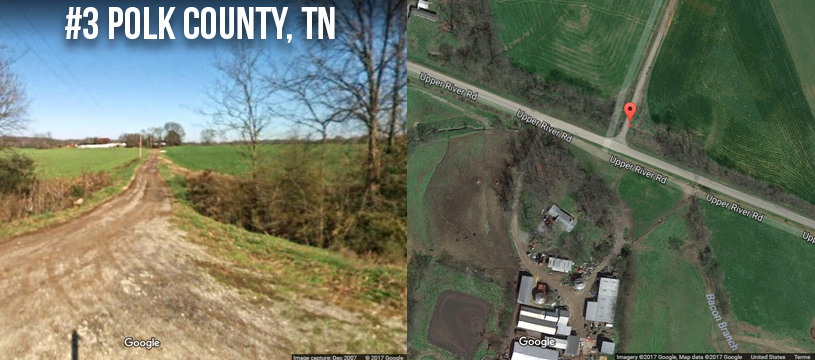
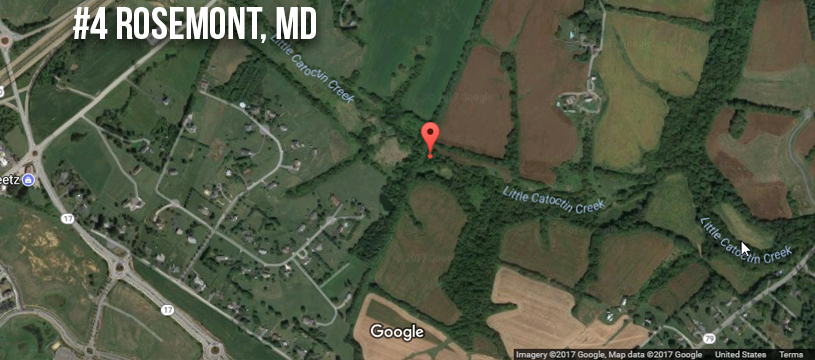
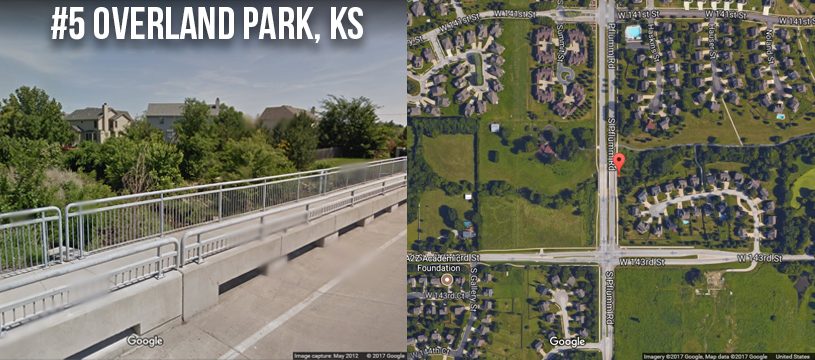
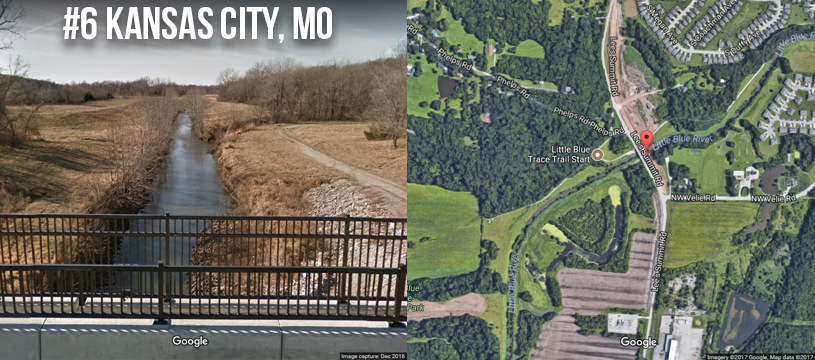
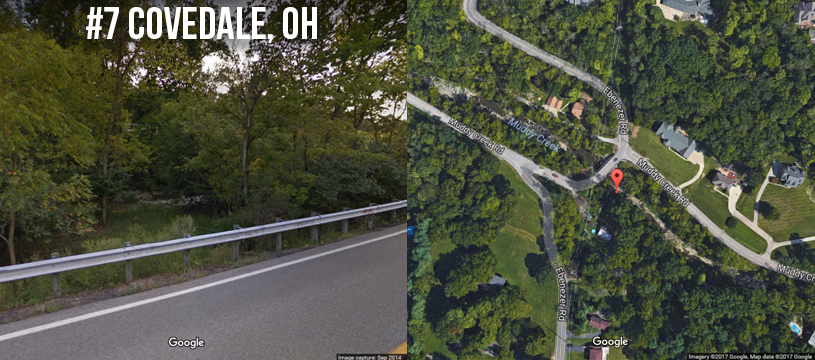
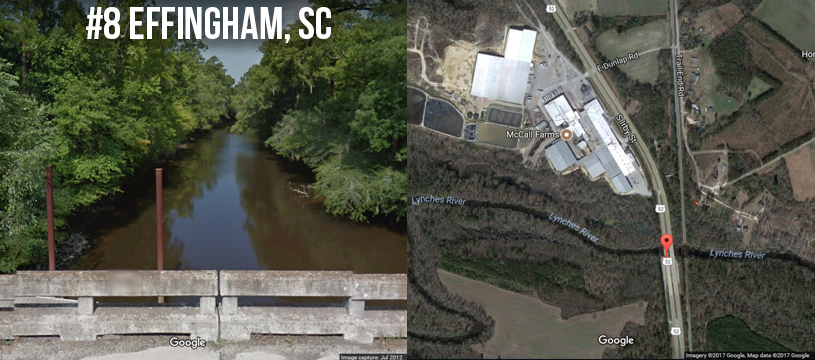
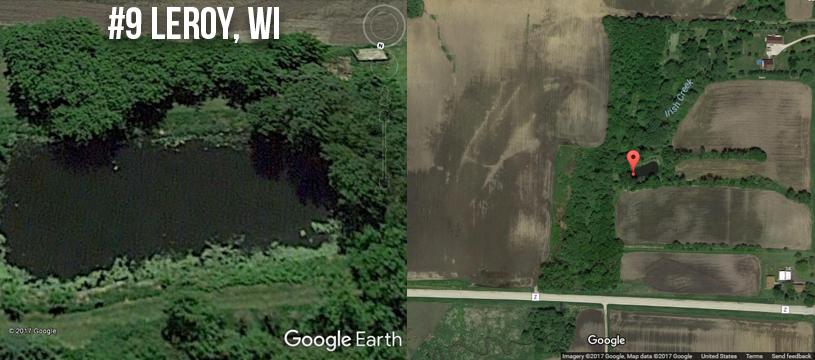
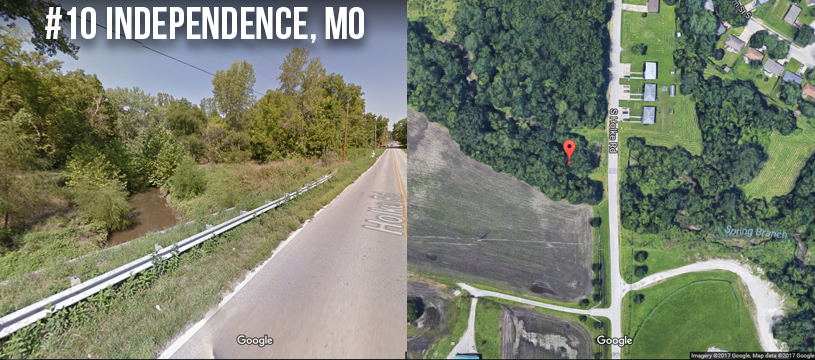

Excellent work on the article.
A study of waters in the Sierra Nevada mountains was done to find out which waters were most likely to have Giardia, which causes severe diarrhea. E.coli presence was used as an indicator. The study found that livestock caused the most contaminated waters.
This type of pollution problem affects the health of everyone, as watersheds used for drinking water might be getting leakage from run off.
another reason to revoke all ranching permits of livestock on our land Ranchers are leaving the land barren and poisoned Native animals are forced out followed by dying of natural grasses If Americans would STOP EATING MEAT demand would plummet,wildlife would be spared and theres a chance the land could heal&repopulate
One glaring problem in this article is located in this quote: “Treated urban sewage and farm manure contain low levels of E. coli.”… 1. E. coli can recolonized and re-emerge after sewage sludge is disposed of on land — post testing… 2. concentrated toxic sewage sludge is not adequately “treated” to kill E.coli 3. the method of ‘testing’ for the presence of E.coli is inadequate to reveal an accurate ‘count’… http://www.sewagesludgeactionnetwork.com see Sewage Sludge Action Network on FACEBOOK
Approve.
—
John Platt
jplatt@therevelator.org
one more fact that might be found interesting [and then I will shut up]…… Scientists, now, have a way to test E.coli to see if it is E.coli found in the human gut…. versus E.coli from an animal gut…. which, of course, would prove the source of the E.coli… sludge vs animal manure, both disposed of on farmland…This work is being done by Dr. Jill Stewart, UNC-Chapel Hill